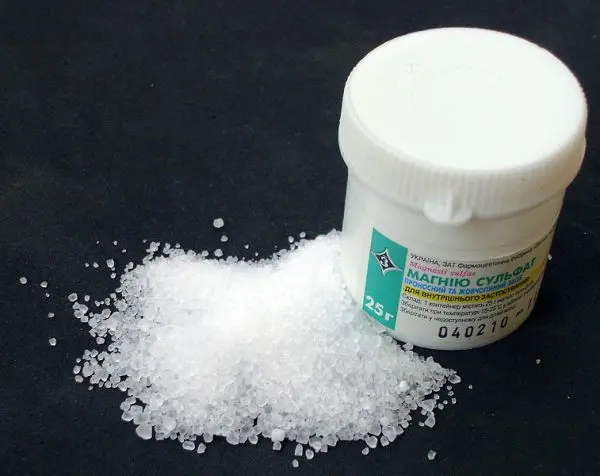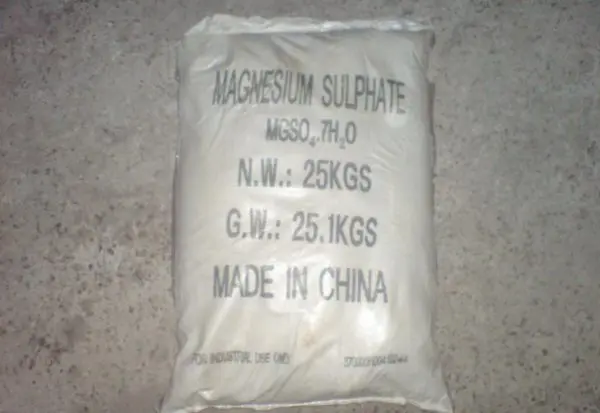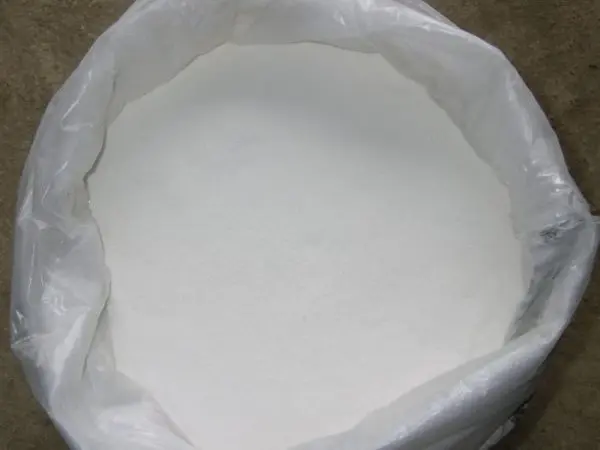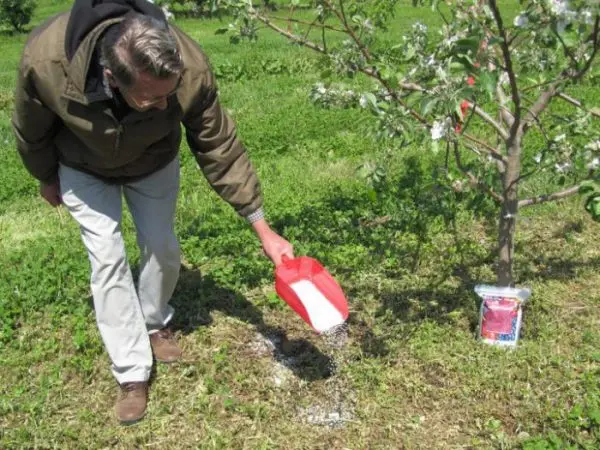Contents
Magnesium sulfate is very widely used by gardeners and vegetable growers. This is an effective care product not only for fruit crops, but also for decorative ones, which can be seen from the reaction of pelargonium to it. The use of fertilizer does not adversely affect the soil, but only increases the level of its fertility.
What does this fertilizer do?
Constant cultivation of the same plot of land gradually reduces the content of micro and macro elements in it, which are necessary for plants to grow, bloom, and form fruits. Magnesium is intensively selected by plants, so it must be regularly applied to the soil. Magnesium sulfate or magnesium sulfate, or as it is also called, magnesia, Epsom or bitter salt is a complex mineral fertilizer, which includes 17% magnesium and 13% sulfur, the remaining components are represented by very small doses.
Magnesium, as a component of chlorophyll, plays an important role in the process of photosynthesis. It stops oxidative processes, promotes the accumulation of essential oils, the formation of substances important for fruit ripening. It is he who stimulates the accumulation of ascorbic acid and sugars in berries and fruits, helps the lush flowering of ornamental plants. Florists note the invariably wonderful result of the use of magnesia in the care of indoor flowers. This fertilizer supports lush flowering and good condition of geranium leaves. With a lack of magnesium, the leaves turn pale, first lose their bright green color, then turn yellow, dry. It starts with the lower old leaves, then the young ones fall off, so the pelargonium can die completely.

Epsom salt never oversaturates the plant, it is applied to the soil, and the plant will take exactly as many elements as it needs at every moment of life. What often happens to geraniums on the windowsill can happen to vegetable or fruit crops in the garden. The soil must contain a sufficient amount of fertilizer so that vegetables can grow green mass, form fruits, and concentrate sugars and vitamins in them.
When to deposit
Magnesium sulphate is introduced into the soil during the spring digging of the soil – this is the main application. Then they feed the plants as needed, the condition of the leaves will tell you whether you need to feed them more. When planting vegetable and ornamental crops in a permanent place, magnesia is added to the hole prepared for the roots. It dissolves in water and with the help of the same water moves through the soil, so it is good to fertilize before rain or during rain. If precipitation is not expected, it is necessary to make abundant watering after applying fertilizers.

Up to 1 g of the substance is applied per 10 square meter of the garden, for flowering and ornamental shrubs the portion is increased to 15 g. For fruit crops, fertilizer is applied to the near-trunk circle, after 1 to 2 days it must be watered, otherwise magnesium will not get to the roots. The optimum water temperature is 20 degrees, the colder it is, the slower the dissolution will take place.
Indoor flowers do not fertilize while the dormant period lasts; you can water with magnesia in the spring, when intensive growth begins. So pelargonium is fed in the spring under the root, and then, as necessary, it is sprayed and watered alternately, but not more often than 1 time in 2 weeks. If the condition of the leaves does not indicate a lack of magnesium, then you can feed the pelargonium only during flowering to add splendor and extend the period.
Magnesia goes well with other mineral fertilizers, but an excess of salts can interfere with the absorption of calcium by plants, so you need to carefully study the instructions before use.

Video “Fertilization of shrubs with magnesium sulfate”
Demonstrative video with recommendations and useful information provided by a plant expert.
How to apply
Magnesium sulfate is perfectly absorbed by all parts of the plant, so the application can be root and foliar, usually leaves are sprayed with a solution. It is desirable to carry out foliar dressing in the morning or in the evening, when it is dry and cloudy, otherwise the rain will simply wash away the substance, preventing it from being absorbed, and the sun may simply burn the wet leaves. Plants are watered with a solution of magnesium throughout the season, more precisely, until the fruits ripen. 25 g of magnesia is dissolved in 10 liters of water, this amount should be enough for 5 square meters of the garden. From 1 to 3 such top dressings over the summer should be enough for plants for good nutrition. For foliar dressings, a not so concentrated solution is used – only 10 g of the substance is diluted with 15 liters of water.
If the plants do not lose leaves, if the leaves retain their bright green color, this indicates the absence of magnesium hunger. This means that the soil has the right amount of elements, then the usual spring application and one root dressing per season in the garden is enough. As for pelargoniums and others, especially large-leaved houseplants, one root and one foliar application of magnesium per season is enough for them.

Magnesia is used on all types of soils, a special effect is observed on sandy soils, it is there that there is a significant deficiency of magnesium. The increased acidity of the soil makes it difficult for plants to consume magnesium, therefore, before applying fertilizer, you must first deoxidize the soil – for this, lime is applied in the fall. Magnesium sulphate helps to make geranium blooms abundant, lush and almost permanent. It is the combination of magnesium and sulfur that gives such wonderful results. Fertilizers are laid during transplantation, or rather, transshipment of geraniums into the main dishes. If prepared soil is used, then it already contains all the main elements, it is worth adding only magnesia and nitrogen, it can be in dry granular form.
Fertilizers will be enough for several months of growth – each watering will dissolve the right amount of the substance and make it available to the pelargonium roots, then it is worth watering with a solution of magnesia at least once a month, and more often if necessary. Top dressing is better to alternate: root and leaf. A solution for watering geraniums is prepared as follows: 1 g of the powder is dissolved in 15 liters of warm water (at least +5 degrees). For spraying, a less concentrated solution is made: only 20 g of magnesia is taken per 5 liters of warm water.

Safety Precautions
The fertilizer comes in the form of a white or greyish powder (or granules) that dissolves easily in warm water. You can store it for a long time, it will not lose its qualities, the main thing is to protect it from moisture and sunlight. It is transported easily, the substance is not toxic. But it should be borne in mind that the dust of magnesium sulphate with systematic frequent contact with the skin can cause dermatosis. The mucous membrane can also react painfully to it – if you inhale or rub your eye with a hand with a small amount of dust on the skin, then irritation of the mucous membranes is provided.
To prevent this from happening, when processing the garden, you need to use gloves and a respirator. But we are talking about dust, not granules. Dust is formed if the powder or granules are stored for a long time, poured, moved from place to place. Caring for pelargonium at home, using granules, carefully handling fertilizer, it is very difficult to harm yourself.

Video “Feeding tomatoes with magnesium sulfate”
Demonstrative video with practical recommendations for fattening tomatoes with magnesium sulfate.









